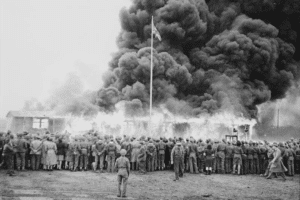
A Charred Memory: A Fragment of Bergen-Belsen at The Black Watch Museum
As the Collections Assistant at The Black Watch Museum, I spend my days surrounded by conflict-related artefacts such as medals, uniforms, letters, and photographs that
Home » Blog » Black Watch History » The Black Watch Volunteer Battalions: Archives & Origins
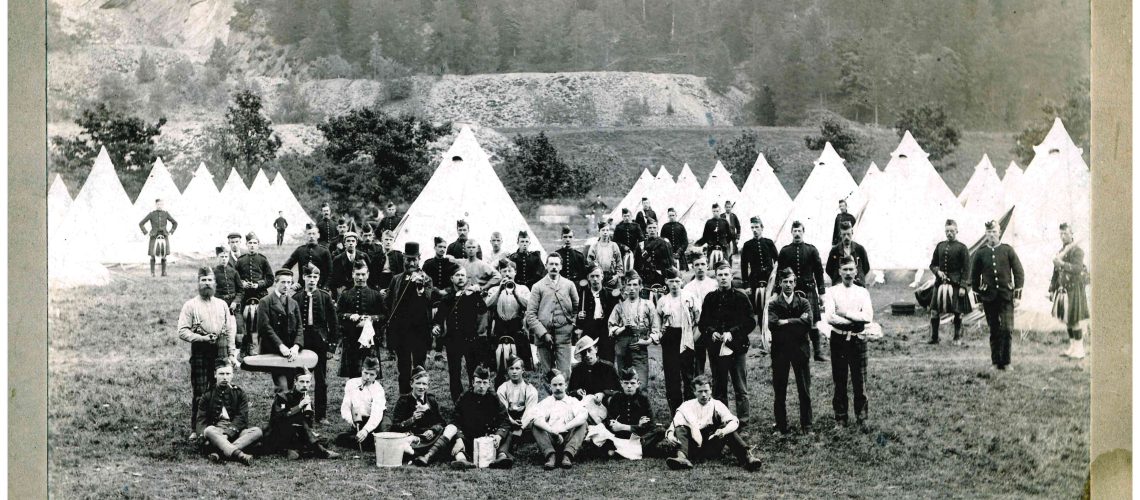

The Volunteer movement can tell us a great deal about British society and how it responded to external threats during the nineteenth century, and it also played a part in the developing identity of The Black Watch as a regiment. As Project Archivist at The Black Watch Castle and Museum, I have recently been cataloguing records of the Volunteer Battalions and wanted to shed some light on this aspect of The Black Watch’s history.
The Volunteer Force emerged in the second half of the nineteenth century, with local Volunteer Corps established across Britain. The men who enlisted would train in marksmanship and complete drills on a part-time basis, outside of their ordinary working lives, and were not a part of the Regular Army. As a popular movement, the Volunteer Force was a response to developing anxieties about Britain being invaded by France. It also had an important class dimension – being heavily associated with the professional middle class, which felt excluded from the (typically upper class) officer ranks of the Army. Meanwhile, the fact that Volunteers were required to pay for their own equipment made it more difficult for working class men to get involved. In 1907, a general reorganisation of the Army led to the Volunteer Force being reclassified as the Territorial Force, which would later evolve into today’s Army Reserve.
There were six Rifle Volunteer Corps (formed in Perthshire, Fifeshire, Forfarshire and Dundee) which were officially recognised as Volunteer units of The Black Watch from 1887. Although they weren’t part of the Regular Army, a significant number of these men were drafted to join Regular Battalions for active service in the Second Boer War (1898-1901). The four Territorial Battalions of The Black Watch (the 4th, 5th, 6th and 7th) all descend directly from the Volunteers. Each of these would go on to make a name for itself on the battlefields of the First and Second World Wars.
Cataloguing is one of my main responsibilities as Project Archivist and involves creating organised descriptions of archival collections for the benefit of researchers. Most of our catalogues (which are available online, via The National Archives) focus on the personal collections of individual soldiers, but it is also useful to create catalogues for smaller, distinct military units which form part of The Black Watch such as catalogues for the Volunteer Battalions, and the 3rd (Militia) Battalion.
The first step involved in cataloguing is to determine exactly what we have in our collection. I can do this by looking through shelves manually, but it is much less time consuming to search for relevant material on our collections database. This presents a challenge when it comes to the Volunteers, due to the fact that these units had several different names and identities over their lifetimes. Take the 3rd Volunteer Battalion as an example, which was known officially by all these titles:
The descriptions in our database have been compiled over the history of the museum and are not standardised, so I have to be prepared to run various searches to spot relevant catalogue items (which might be labelled ‘3FRV’, ‘3VBRH’ or ‘Forfar Rifle Vols’). It’s therefore important to have a working knowledge of the history of each unit, and also understand how to retrieve information using our database’s search function.
Another challenge involved in this task is trying to tell each Volunteer Battalion apart in photographs. There isn’t a great deal to differentiate between the 4th and 5th Volunteer Battalion, for example, but annotations on photographs, locations, and subtle differences in uniform can help me to accurately describe an image. I am indebted to our resident expert, Pipe Major Alistair Duthie, for his help with identifying photos, and I also made use of Lieutenant-General James Grierson’s book Records of the Scottish Volunteer Force which includes some helpful illustrations.
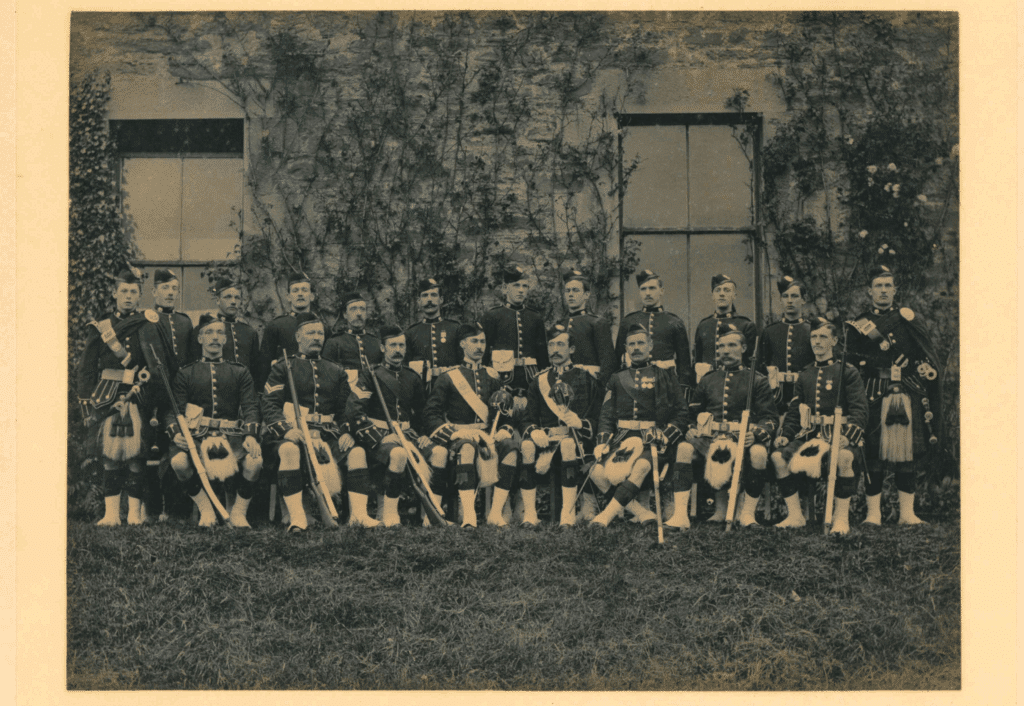
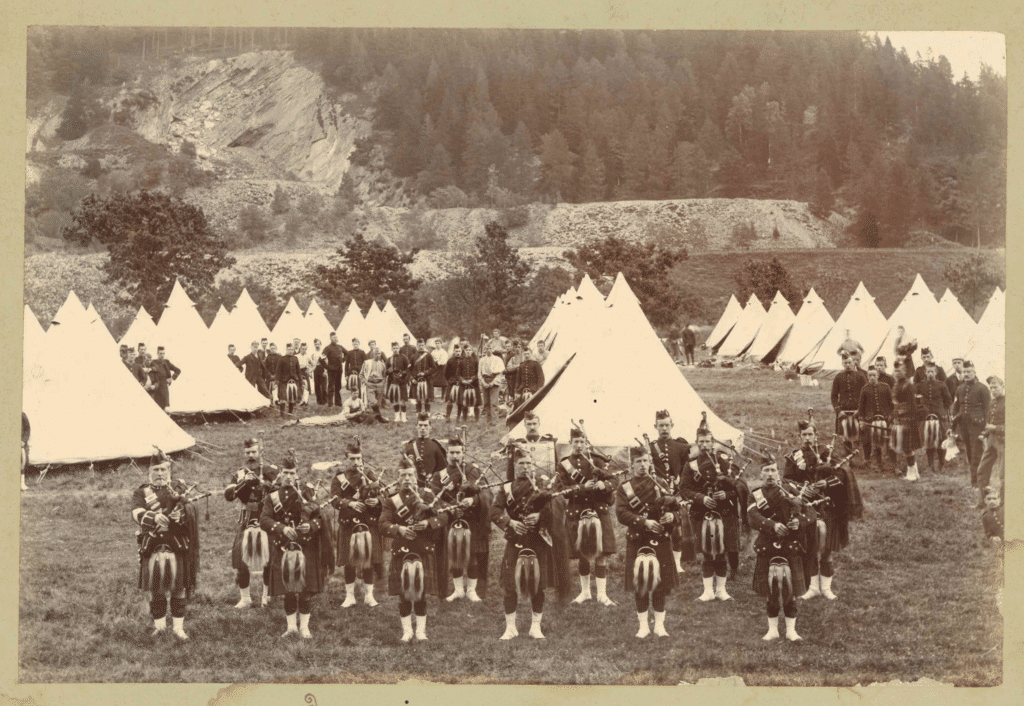
Of all the items I have looked at in the cataloguing process, perhaps the most interesting is the set of six scrapbooks compiled by the Marquess of Breadalbane as Commanding Officer of the 5th (Perthshire Highland) Volunteer Battalion. These large volumes of newspaper cuttings contain a lot of detail on what took place at the Volunteers’ annual camps, and also cover the overseas conflicts and geopolitical issues that concerned people in Perthshire at the turn of the century.
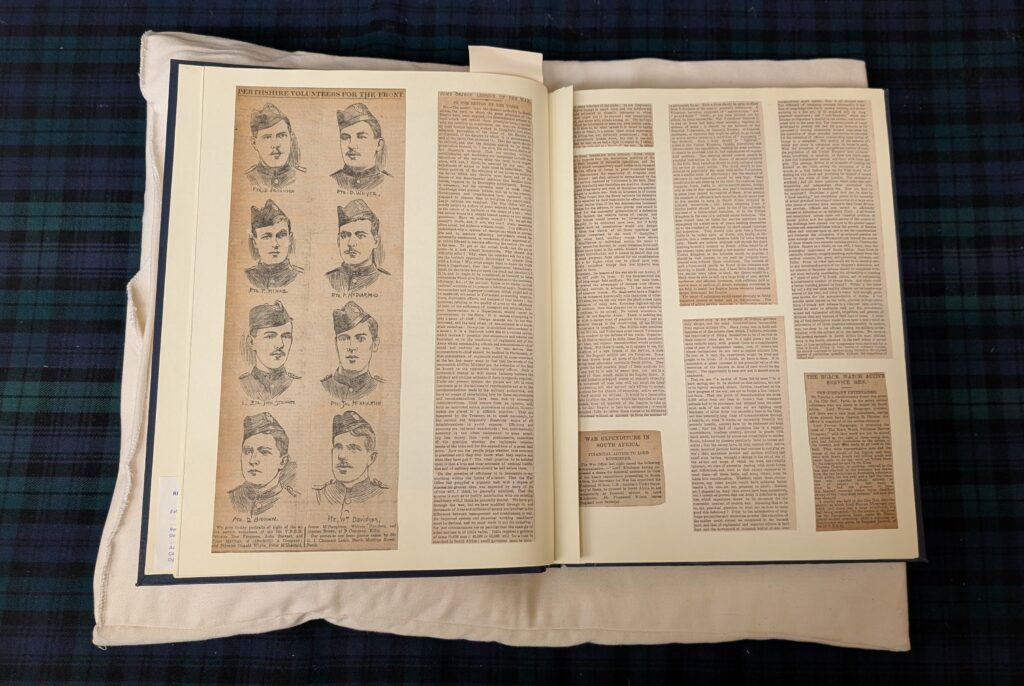
From my perspective, cataloguing is a practical way of organising our archive but I also hope to put people in touch with aspect of history which deserve more attention. The Volunteer Battalions are representative of a significant historical development and should be of interest both sociologically and from the perspective of a Regimental history. Although not associated with any of The Black Watch’s most famous moments, these units are an important marker of the growing popular engagement with Britain’s military which would help to facilitate the mass mobilisation required for the First World War. Described as “the military expression of the spirit of self-help”, the Volunteer Force gained popularity in response to political developments but also because men wanted to improve themselves and for the opportunity to socialise with other like-minded people. Anyone interested in the proud legacies of the Territorial Battalions, whose recruits from Dundee, Angus, Fife, Forfar and Perthshire distinguished themselves in the First and Second World Wars, should consider the origins of the 4th, 5th, 6th and 7th as Rifle Volunteer Corps in the late-nineteenth century.
To learn more about any of our catalogued collections, you can browse through them on Discovery – The National Archives’ online platform. You can also get in touch with our Research Team at research@theblackwatch.co.uk for additional details of our holdings (More Information).

As the Collections Assistant at The Black Watch Museum, I spend my days surrounded by conflict-related artefacts such as medals, uniforms, letters, and photographs that
Just before heading up the stairs to Gallery 4 visitors will see the painting of someone who, on first glance, might not look like a
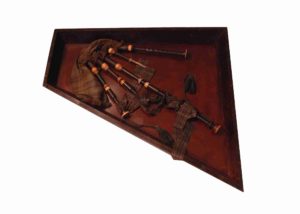
Rosie Waine is the William Grant Foundation Research Fellow at the National Museum of Scotland. Here she writes how the Black Watch Museum & Castle
